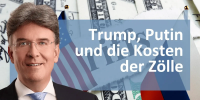The world remains in a state of disequilibrium. While modern civilization has rarely found balance, the range of outcomes tied to central banks optimizing for future growth and political leaders navigating new domestic and international realities stands particularly wide. That makes our annual forecasting ritual more difficult. Last year’s prognostications of a resilient consumer and stubborn inflation proved correct, but a major conflict in Europe and the Federal Reserve’s war on inflation left our market optimism misplaced. Higher interest rates and the prospect of a recession spared neither stocks nor bonds and punished speculative fads along with blue chip stalwarts. For 2022, the S&P 500 was down 18%, nearly returning the index to its 2020 close.
The direction of markets in 2023 and beyond depends largely upon the answers to three questions: (a) will hot and cold conflicts in Ukraine and Taiwan, respectively, stay contained? (b) can the Fed return inflation to the low-single-digits without triggering deep economic and earnings recessions? and (c) given the altered political economic backdrop, what multiple should investors pay for stocks? Despite abysmal sentiment, market volatility remains subdued with inflation data driven rallies and sell-offs punctuating what has generally been a steady grind lower. We continue to await a market uplift (the so-called January effect) as tax loss selling abates.
Uncertainty in the board room and elevated borrowing costs curtailed deals and financial engineering. M&A normalized to pre-pandemic levels, totaling $3.6 trillion in 2022, down 32% from the record-breaking $5.1 trillion activity in 2021, excluding SPACs. Activity by both strategic and financial buyers reawakened late in the year as market dislocations presented bargains too enticing to resist. Portfolios benefited from several deals, including Philip Morris International’s recently completed acquisition of Swedish Match and the announced acquisition of Aerojet Rocketdyne (+20%) by L3 Harris Technologies, Aerojet’s second trip to the altar in as many years. A number of announced spin-offs, including Liberty Braves as an asset-backed company and a fourth separation involving Madison Square Garden could create future consolidation targets. The most active industries were Technology ($720 billion, or 20% of total dealmaking), Energy & Power (13% of deal volume), and Industrials (12% of deal volume). Private Equity accounted for a record 20% of M&A activity in 2022, with total value reaching $785 billion. The U.S. remained the top venue for M&A with deal activity totaling $1.5 trillion, or 43% of worldwide volumes, a similar proportion compared to 2021.
The contracting stock multiples, widening credit spreads and rising interest rates spared few asset classes. Convertibles were caught up in this storm, but there are some positive takeaways for our market. Specifically, convertibles outperformed their underlying equities this year, participating in only 56% of the downside.
The convertible market is now quite fixed income oriented with high yields, high premiums, and low deltas. While this is not the typical profile of our market, it presents a unique opportunity. At current levels, many convertibles should participate in very little equity downside from here. They offer yields to maturity that in many cases exceed the expected annual return of our market over the long term. Some of these issues are trading at double digit yields to maturity despite positive cash flows and growth opportunities. We have seen some companies that have addressed investor concerns by issuing more manageable converts and buying back or exchanging some percentage of their existing debt. This can be an accretive transaction for the company and usually improves the credit. One portfolio holding, Bandwidth, did a transaction like this during the quarter and it was one of our top performing convertibles as a result. As it becomes clear that a company is not on a path to bankruptcy the bonds will move higher regardless of the equity price. This is what we call a credit delta. Additionally, in the event that one of these companies is acquired, the bonds would be puttable at par. This would be a very attractive outcome for bond holders. We continue to look for value in this area of the market and have added a number of these issues to the portfolio.
After a record low year for convertible issuance in 2022, we expect the primary market to rebound this year. The issuance we saw in the fourth quarter came at attractive terms and we expect this to continue as there is a significant appetite among convertible investors for new paper. We believe many companies have delayed coming to the market and converts offer an attractive way for companies to add low cost capital to their balance sheets, particularly as interest rates move higher and other forms of financing such as High Yield become more expensive. Continued issuance allows us to stay current and we expect to selectively layer new issues into our portfolio to maintain the asymmetrical risk profile we are seeking to achieve.
23.01.2023
Swiss Fund & Finance Platform




